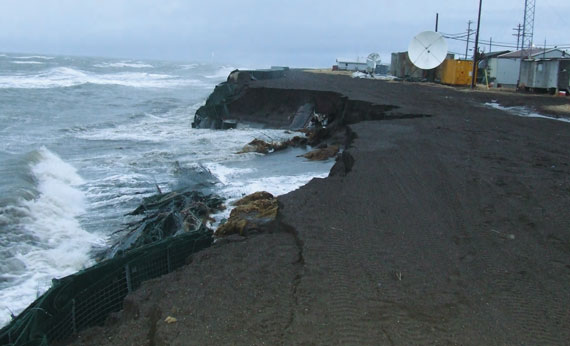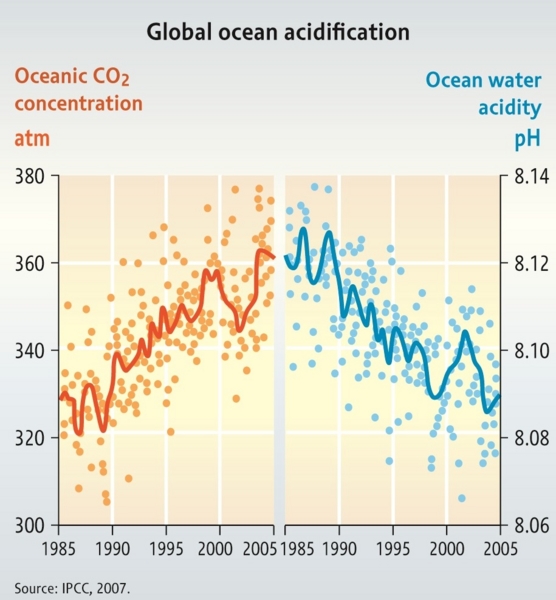While sea level rise might feel like a more direct threat to some human settlements, increasing ocean temperatures themselves carry important consequences to understand, too. The rising ocean temperature is having dramatic effects in some areas. Along polar coastlines, sea ice is thinning and melting altogether, opening the coastlines for modern human development, but causing traditional societies and wildlife that depend on the presence of sea ice to move or die. Coastal permafrost is melting quickly, causing shoreline collapse and rapid coastal retreat, damaging ecosystems and human structures –– indeed, entire Native Alaskan settlements are moving as the villages literally collapse. In tropical areas, rising ocean temperatures are contributing to coral bleaching and death, destroying these rich ecosystems worldwide and wrecking tourism industries in many locations.

Perhaps an even greater threat associated with climate change is ocean acidification. The global ocean absorbs a major proportion of the atmospheric carbon dioxide emitted by fossil fuel burning and other human activities. The absorption of CO2 is acidifying ocean water. Scientists estimate that since the beginning of the Industrial Revolution, ocean acidity (in terms of H+ ion concentration) has increased 30 percent and will increase much more in the future. The main concern is that increasing acidification could affect major oceanic carbonate-based species and ecosystems–– from plankton, to corals, to shellfish.

All these impacts are happening today and will certainly increase in the future. Sea level rise will continue to accelerate from glacial melt and especially from thermal expansion; it could become catastrophic if the Greenland or West Antarctic ice sheets were to collapse. Ocean storms such as hurricanes are expected to intensify, and some scientists think that ocean storm frequencies could increase in the future. Accelerating sea level rise and more intense storms will mean that storm surge and wave damage will be much greater, as will be coastal erosion. Coastal ecosystems will come under even more stress than they are feeling today. Ever-increasing ocean temperatures and acidification could mean the end of corals, and a worst-case scenario could see the collapse of major ocean food chains.
